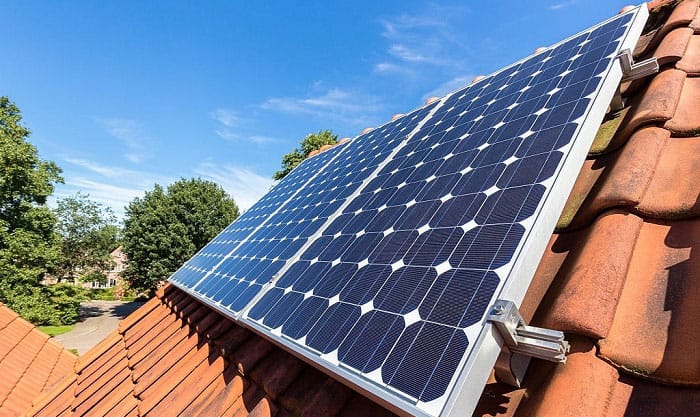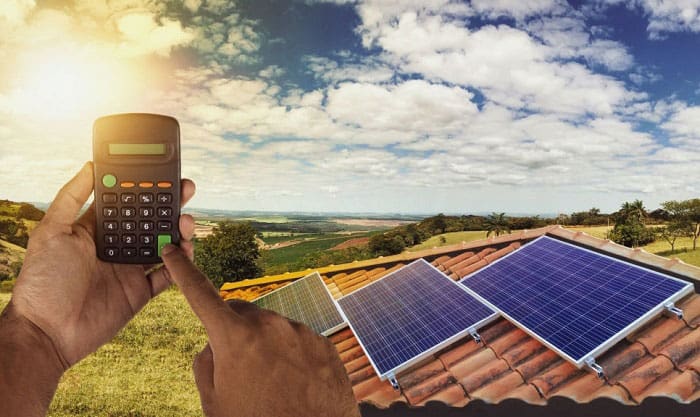Undoubtedly, a fridge is an essential appliance most homeowners can’t live without. In general, you’ll need four regular solar panels to run a fridge.
But, how much solar power do I need to run a refrigerator? It would help if you answered this question after setting up a solar power system at home.
Indeed, since refrigerators come in different sizes and types, they also call for different amounts of solar power to operate. Additionally, to uncover the amount of solar power to run a refrigerator, you need to consider the length of time you plan to run your fridge.
Let’s figure out more about the solar panel to run refrigerator! Read below.
Table of Contents
How to Compute the Number of Solar Panels to Run a Fridge?
Step 1: First, you have to figure out how many watts your solar panels generate.
Please note that how much solar power your solar panels generate mainly depends on several factors like the weather conditions, your solar setup, and the solar panels.
On average, domestic solar panels generate a minimum of 250W during peak production. Hence, if your solar panel generates 250W for four hours daily, it corresponds with one kilowatt-hour.
So, we arrive at this equation: (250W x 4 ÷ 1,000)
Step 2: Then you have to calculate the number of watts your fridge consumes
Most refrigerators nowadays come with stickers that have “ENERGY RATING” written on them. This label evaluates the average kilowatt-hour your refrigerator consumes per year. But, if your fridge does not have this sticker, you may refer to the user guide for more details.
It’s worth noting that refrigerators with “ENERGY STAR” certifications are approximately 9% more energy-saving than refrigerators that meet the standard national minimum energy efficiency.
Daily consumption: By dividing your yearly consumption by 365, you can determine the number of kilowatt-hours your fridge consumes daily.
To determine your refrigerator’s power rating, consider the following tips:
- Do some inspections inside the door of your fridge. Some refrigerators have technical specs, such as the amps, volts, and watts specified inside the appliance.
- Refer to the manufacturer’s website or search online. These days, it’s effortless to uncover the technical specifications of appliances online.
- Look for the EnergyGuide label of the refrigerator. This way, you can learn more about the usage of your appliance. Generally, this label indicates the approximate yearly electricity usage and cost details.
Step 3: Dividing the Power Consumed by the Energy Generated
After figuring out your energy requirements and the amount of power the solar power generates, the rest of the computation doesn’t have to be complicated.
The number of solar panels required = The energy requirements/the energy generated.
Let’s have this one as an example:
Your refrigerator consumes 2 kilowatt-hours daily
Your solar panel generates 1 kilowatt-hour daily
So, the equation will be:
2 ÷ 1 = 2 (solar panels required to operate your refrigerator)
Quotient 2 answers the question, “How many solar panels do I need to power a refrigerator”?
How Many Solar Panels Are Needed to Operate a Freezer and a Fridge?
Determine the number of solar panels required in operating a freezer and a fridge by dividing your fridge’s number of watts by the number of watts your solar panel generates.
Thus, if your charge controller, solar panels, fridge, batteries, and freezer are efficient, then they can significantly minimize your solar power requirements.
Is It Possible to Operate a 12v Refrigerator From a Solar Panel?
The delightful news is that you can operate most 12V camping refrigerators with a correctly-sized solar panel or a series of solar panels, provided that there’s adequate sun exposure.
You may refer to the computations discussed above to figure out the number of panels necessary to operate your refrigerator 24/7 using solar energy.
Some Factors to Consider When Setting Up a Solar System at Home
Fundamentally, there are several different components required to install a solar power system at home. The main components include solar panels, batteries, solar inverters, charge controllers, and solar generators.
- Solar panels – Unquestionably, solar panels are the most vital components that complete a solar PV system. Solar panels generate all your solar power. Thus, to determine the amount of solar power necessary to operate a fridge, doing some computations concerning your solar panels is a must.
- Meanwhile, using solar power to run a refrigerator isn’t as straightforward as linking it to a series of solar panels. Since fridges generally collect power 24 hours per day, it’s unworkable to run one by utilizing solar panels alone.
- Solar panels merely generate electricity when they acquire sufficient sun exposure. That said, it’s necessary to link the solar panels to an inverter and a battery so that they can supply sufficient solar watts to run a refrigerator.
- This is how it goes: the solar panels will produce power throughout the day; afterward, that power will be converted to AC and kept in a battery bank. Through this, you will have adequate power to run the refrigerator at night.
- Batteries – Meanwhile, when choosing batteries, please ensure that their capacity is sufficient to handle your fridge’s power requirements for the entire night. Aside from solar panels, batteries, and inverters, the other valuable devices needed when setting up a solar power system include charge controllers and solar generators.
- Charge controllers – From the name itself, charge controllers work as “regulators” that regulate current flow from and to the batteries. They run from the solar panels to the battery. Their primary function is to ward off the possibility of battery overload, overcharge, and discharge.
- Furthermore, charge controllers safeguard various devices that are connected to the batteries. By using one, you can prevent dealing with damage issues concerning your batteries.
- Solar generators – On the other hand, solar generators work as a power bank that you can utilize to run various electronic devices during a power outage or when electricity is inaccessible. It converts the photons from the sun into energy kept in batteries within it.
- You can charge a solar generator through a wall socket, solar panels, or a vehicle’s cigar lighter port. Some models are already equipped with solar panels; however, most versions require buyers to purchase the solar panels separately.
- Be sure to look into the number of watts required for your application when picking the right solar generator for you.
Final Thoughts
Figuring out the power requirements of your fridge is not so complicated. There’s no denying that using solar power for refrigerator can help homeowners save more and protect the environment.
Again, here are the primary points in answering the question: How much solar power do I need to run a refrigerator?
- An average fridge commonly requires about 3 to 4 standard solar panels to operate
- Common residential solar panels are graded to generate power ranging from one kilowatt-hour to four kilowatt-hour
- Various refrigerator sizes and types need diverse amounts of solar power

As the founder of the Avasolar team, I aspire to solve the problems for households in selecting, installing, and utilizing solar mechanical devices.


